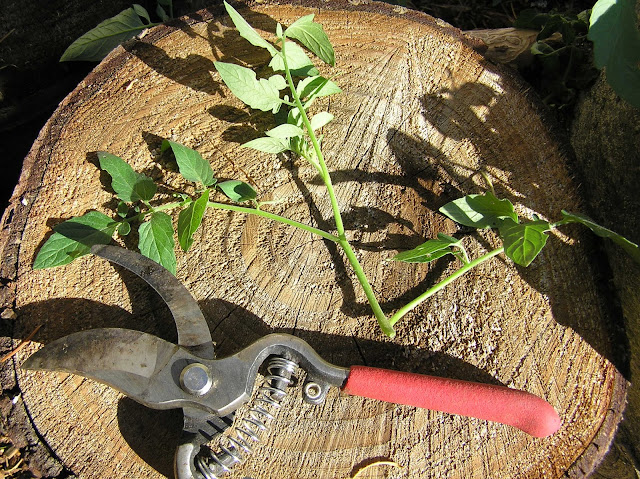
Tomato plants fall in to two categories: determinate or indeterminate. When it comes to cutting back tomato plants, there are some things you need to know. It is possible to get overzealous and wind up with an over pruned tomato plant, but removing dead, diseased, or just unnecessary leaves and stems from tomato plants increases the fruit. Plants need foliage to create energy from photosynthesis, but the growth and development of foliage uses up a lot of the plant’s energy that could be used for fruit production. Regularly pruning tomato plants will help the plant produce more fruit.

Your tomato plant won’t really instantly grow three new stems in the place of every stem you cut, but it will reward your pruning efforts with a bounty of delicious fruit. The way it responded to my pruning reminded me of the mythical hydra, sprouting new stems, leaves and flowers wherever I snipped and pinched. I didn’t have much hope that I would get any tomatoes from it, but every evening I found myself sitting next to it, enjoying the summer breeze and carelessly picking at any suspicious looking leaf on the plant. Still, I placed it in a safer spot and cut off all the broken and damaged stems.Īfter I removed all the damage, it was as small as it had been when I purchased it. I was heartbroken and figured that was the end of my tomato plant. Then one night a particularly nasty storm blew it off the balcony, ripping many of its stems off, battering and bending what remained. I planted it in a large pot on a sunny balcony and in just a few weeks it sprawled all over the balcony railings, covered with fruit blossoms.


Many years ago, before I really knew anything at all about plants or gardening, I bought a small starter Sweet 100 tomato plant.


 0 kommentar(er)
0 kommentar(er)
